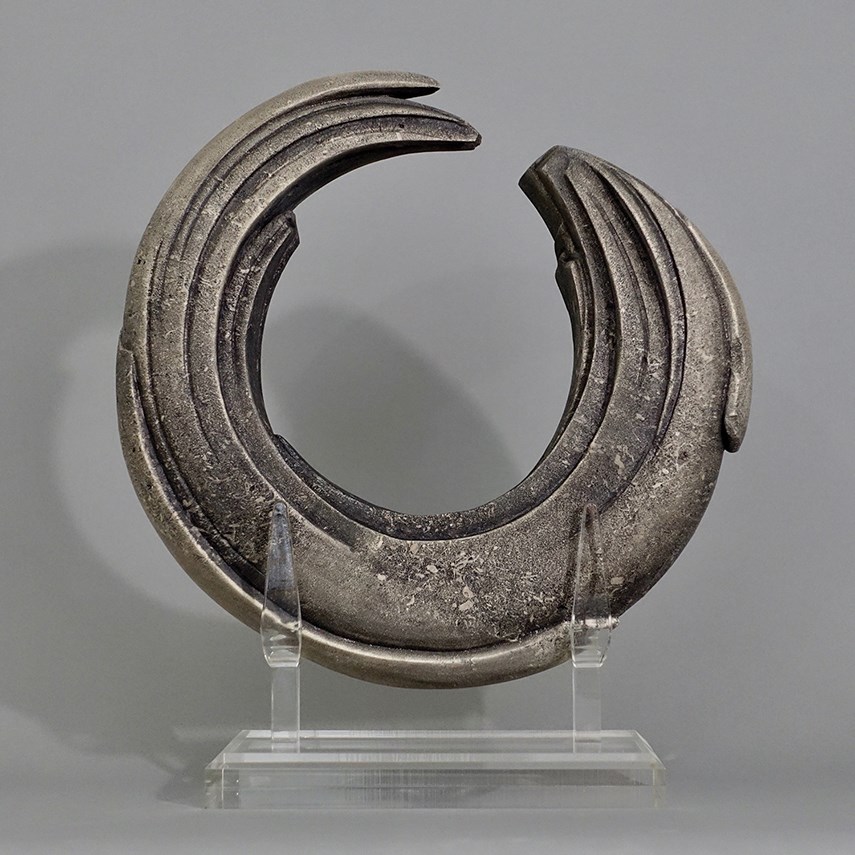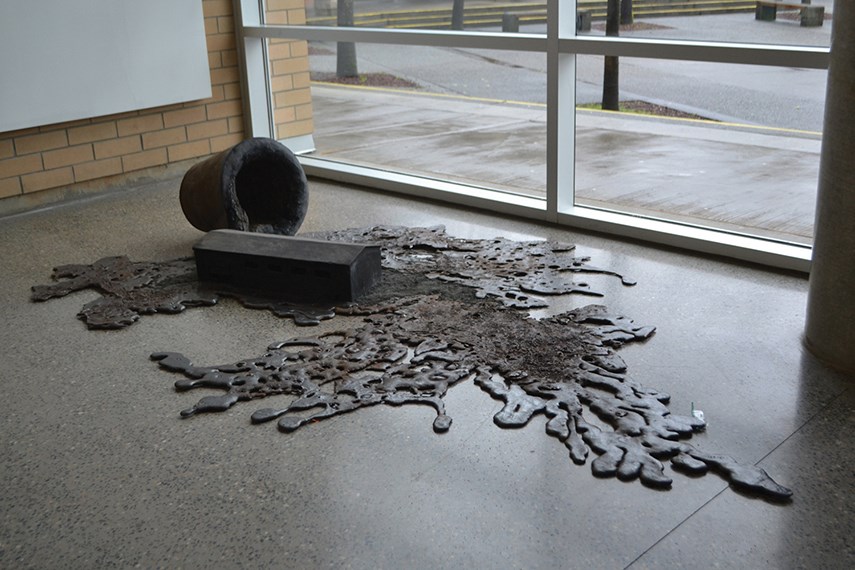Eastside Culture Crawl tackles urgent need for affordable artist space in Displacement Forum, Oct. 25 and 26 at DUDOC (1489 Frances St.) in conjunction with art exhibition. Eastside Culture Crawl takes place Nov. 14 - 17. For full event details, visit culturecrawl.ca/events.
There hasn’t been any heat for a year. The stairs creek, the hot water’s as reliable as last decade’s iPhone and occasionally the heap of car parts around the front door make the building look like it’s being slowly digested by a sentient junkyard.
It was great.
Because for North Vancouver sculptor Cat Mudryk, the Vancouver studio had one quality that outweighed all the defects.
“It was ours.”
After nearly three years of finding shapes locked inside Italian alabaster and English limestone on Franklin Street, Mudryk was told she’s getting kicked out.
“We’re never going to find a place as sweet as we had,” she says, estimating her rent per square foot will probably go up 50 per cent.
As the City of Vancouver grapples with the housing crisis, scores of artists who crafted, created and experimented in East Van are finding themselves cast out.
At 10 a.m. on a Wednesday morning, former Capilano University professor George Rammell is packing up. He’s going to vacate his studio at the end of Terminal Avenue and move to Gambier Island.
At 66, Rammell feels he’s contributed to culture. He even goes as far as to say that, in some ways, his work is “about Vancouver.” He can’t afford to stay.
“I’m just going to have to be content with the solitude,” he says of Gambier Island.
In an effort to keep more artists in the city, Eastside Culture Crawl Society executive director Esther Rausenberg is organizing a Displacement Forum and Exhibition.
Set for Oct. 25 and 26 with salon-style exhibitions to follow, the forum is meant to alert policymakers to the severity of the situation before artists open up their studios to the public for the annual four-day culture crawl.
“It is dire,” Rausenberg says. “If this is indicative of the next 10 years, then we basically are going to be a city without art.”
When evaluating art space, the focus generally falls on places paintings are hung and plays are performed.
“We don’t really look at the other end of the spectrum which is: where is this art being created?” Rausenberg explains.
Rausenberg advocates examining opportunities for studios in industrial areas where residential development isn’t permitted.
“There’s definitely a means,” she says of keeping artists in the city. “The question here is: Is there a will?”
If the city can’t find that will, the opportunity to create lasting works will disappear, according to Rammell.
“You can’t weld and use chainsaws under somebody’s apartment. It just doesn’t work,” he says.
In the 1980s, Rammell found a subsidized space on the north side of Granville Island. In a bid to “finance my own unsalable work,” he took jobs for Bill Reid, including some work on The Raven and the First Man.
The yellow cedar rendering of human figures, captive by fear and liberated by curiosity, emerging from a clamshell beneath a massive, welcoming raven is part of what makes the UBC Museum of Anthropology a landmark. Working together, Rammell interpreted Reid’s grunts and altered the first men accordingly. The two artists couldn’t have had that rapport without a space subsidized by the government, Rammell says.
“They will subsidize big oil, mining, logging . . . they’ll subsidize all that stuff but they will not subsidize art,” he laments.

Mudryk was never supposed to be an artist.
It never occurred to her that making a living in the arts was even a possibility until she was studying science in university and felt herself resisting the life she was preparing herself for.
She transferred to the theatre program.
“That was a good phone call to the parental unit,” she laughs.
Working on theatre design got her thinking in three dimensions but her interest in carving didn’t reveal itself until after she took a clay sculpting and felt her hands sink into something shapeless that she could shape.
“This is home,” she remembers thinking.
Stone was even better. She could lose herself in stone, she says, recalling she once spent five weeks turning over a chunk of soapstone before seeing what it could be. She’s fascinated by shapes, textures, and the way that alabaster can turn translucent if you get it as thin as deli prosciutto. But with rents rising and space vanishing, she’s found it difficult to value her work, she says, noting that thousands in rent seem inconsequential amid million-dollar property deals.
“In a world of math, you’re the smallest fraction.”
For a few days after learning she was losing the studio Mudryk wanted to put her stuff into storage and stop. But in thinking about her choice, she decided there was no choice.
“What would your home be without art and architecture and colour?” she asks. “I don’t think we have a choice. I think we have to keep going.”



